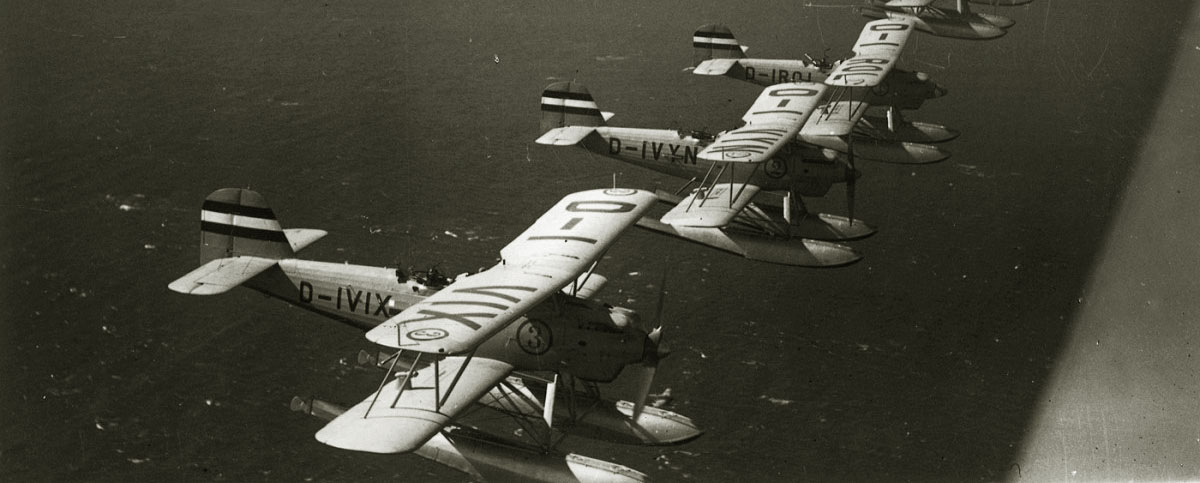|
At the end of 1937 He.60 squadrons were renamed. 1./Ku.Fl.Gr.106 became 1./Ku.Fl.Gr.406, remaining on Liszt. 1./Ku.Fl.Gr.206 became 1./Ku.Fl.Gr.106 based in Nordeney, and 1./Ku.Fl.Gr.306 after being renamed to 1./Ku.Fl.Gr.506 was transferred ie Nordeneyya to Divenov. In April 1937 the fourth squadron was formed with He.60 in Kiel - 1./Ku.Fl.Gr.406, renamed 1./Ku.Fl.Gr.706 in October, and later transferred to Kamp. At the same time, two squadrons of shipborne aircraft were formed on the basis of the He.60 - the 1st and 5th in the 196th group of shipborne aircraft. From October 1937 they were based at Wilhelmshaven and Kiel. 1./Ku.Fl.Gr.506 in 1938. was briefly re-equipped with the He.114a-2, but soon returned to the He.60 again. Spring and summer of 1939 both squadrons began to re-equip from He.60 to Ar.196a-1, and by the start of hostilities 1./Ku.Fl.Gr.106 was re-equipped to He.115a-1.
By the beginning of September 1939. coastal aviation had 54 (including 45 combat-ready) He.60s in the North Sea and another 27 (21 combat-ready) in the Baltic. Despite excellent seaworthiness, low flight characteristics and weak armament of the He.60 made them very vulnerable. Immediately after the start of the war, the aircraft began to be gradually removed from service with short-range reconnaissance squadrons. By the beginning of 1940. they have been almost completely replaced. However, in the middle of 1941. The He.60 reappeared as part of the naval reconnaissance air groups, for example, in SAGr.125, 126 and 127.
So SAGr.125 as part of the Ostsee air command in the 1st air fleet, participating in the invasion of the Soviet Union, had He.60 and He.114c-1 in its 1st squadron. The group operated over the Baltic, Latvia, Estonia and the Gulf of Finland, but was reorganized at the end of the year. During 1942. The 1st squadron SAGr.126 used the He.60 together with the Fokkers T.VIII-W over the Mediterranean and Aegean seas, but the He.60 made its last sorties as part of the SAGr.127. This group initially had the He.60 in all three squadrons, together with the Ar.95, and then with the Hs.126, operating as part of the 1st Air Fleet over the coast of the Gulf of Finland. between June and October 1943. only 3./SAGr.127 used the He.60, after which this seaplane was finally withdrawn from service.
In total, during the serial production of the He.60 on the Arado and Weser, each produced 100 aircraft, but, despite a very solid design and good seaworthiness, the engine power was clearly not enough. As a result, any attempts to expand the range of tasks to be solved failed. In 1935 one of the B series gliders (D-IPZI) was equipped with a DB-600A engine, providing a much greater thrust-to-weight ratio, which significantly improved flight data. However, problems with the supply of the DB-600 did not allow the rest of the machines to be re-equipped. As a result, despite having a suitable engine. He.60 was pretty soon taken out of production and armament.
Bibliography

- Luftwaffe Aviation / V.N. Shunkov /
- Luftwaffe Combat Aircraft / Edited by David Donald /
|






